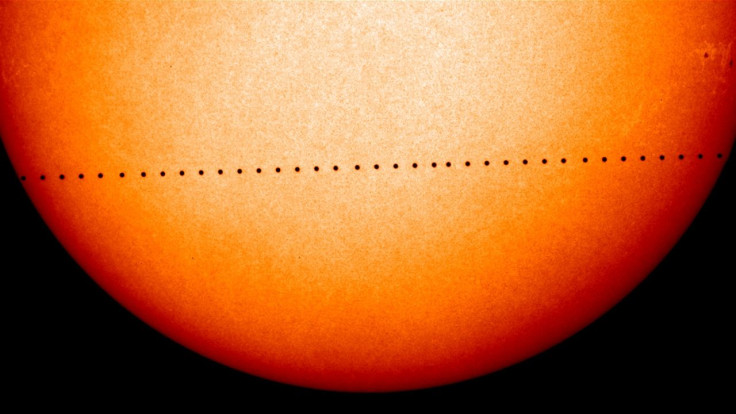Mercury Transit 2016 Live Stream: Watch The Solar System’s Innermost Planet Flit Across The Sun

On Monday, Mercury — the innermost planet of our solar system — will pass across the face of the Sun from the point of view of Earthlings. The event, known as Mercury transit, last took place in 2006 and won’t happen again before 2019.
When the transit begins at 7:12 a.m. EDT, Mercury — a small scorching planet just over 3,000 miles in diameter —will appear as a small black dot crossing the edge of the sun. The transit will last for seven-and-a-half hours, ending at 2:42 p.m. EDT.
The event, which takes place only about 13 times a century, will be visible to skywatchers everywhere on Earth, except those in Australia, New Zealand, Indonesia and the Philippines. Unfortunately, in order to see the small disk of Mercury passing across the face of the sun, one would need to be equipped with a good telescope fitted with a proper solar filter.
However, for those of you who do not have telescopes, there are several places you can watch the event live. NASA and the European Space Agency have set up live streams where the transit can be seen.
Remember, do not look directly at the sun without a proper solar filter. Doing so risks severe eye damage.
Additionally, NASA will also stream a live program on NASA TV from 10:30 a.m. EDT to 11:30 a.m. EDT, where planetary, heliophysics and astrophysics experts will discuss the science behind the Mercury transit.
“Astronomers get excited when any two things come close to each other in the heavens,” Louis Mayo, program manager at NASA’s Goddard Space Flight Center in Greenbelt, Maryland, said in a statement released last week. “This is a big deal for us.”
© Copyright IBTimes 2024. All rights reserved.






















